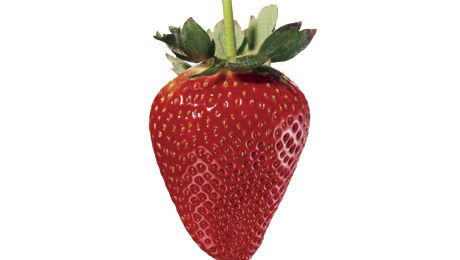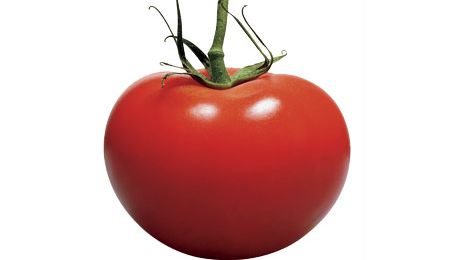A Food Plan to Energize Your Plate
Fine-tune your food plan so that you also maximize your energy, mental clarity, and muscle mass.

Now that you know how many calories you need to lose weight every week (see marieclaire.com/powerup), you can fine-tune your food plan so that you also maximize your energy, mental clarity, and muscle mass.
The key is tuning in to your metabolic type, and learning how your body uses protein, carbohydrates, and fats. Most people fall into one of three groups when it comes to converting calories to energy (a.k.a., oxidizing your food): slow, medium and fast oxidizers. Feel your body soar when you find your type and follow your ideal balance of nutrients.
WHAT'S YOUR TYPE?
Find out how with this questionnaire.
Choose the letter that matches your response.
1. In the morning you:
A. Don't eat breakfast
B. Have something light, like fruit, toast, or cereal
C. Have something heavy, like eggs, bacon or steak, and hash browns
Get exclusive access to fashion and beauty trends, hot-off-the-press celebrity news, and more.
2. At a buffet, the foods you choose are:
A. Light meats like fish and chicken, vegetables and a salad, a sampling of different desserts
B. A mixture of A and C
C. Heavy, fatty foods like steak, ribs, pork chops, cheeses, and cream sauces
3. Your appetite at breakfast is:
A. Low
B. Normal
C. Strong
4. Your appetite at lunch is:
A. Low
B. Normal
C. Strong
5. Your appetite at dinner is:
A. Low
B. Normal
C. Strong
6. Caffeine makes you feel:
A. Great — it helps me focus
B. Neutral — I can take it or leave it
C. Jittery or nauseous
7. For dinner you prefer:
A. Chicken or fish, salad, and rice
B. No preference — choice varies daily
C. Heavier, fatty foods like pasta, steak, and potatoes
8. After dinner you:
A. Need to have something sweet
B. Could take dessert or leave it
C. Don't care for sweets and would rather have something salty, like popcorn
9. Each day, you eat:
A. Two or three meals with no snacks
B. Three meals and maybe one light snack
C. Three meals and a lot of snacks
10. Your attitude toward food is:
A. I often forget to eat
B. I enjoy food and rarely miss a meal
C. I love food — it's a central part of my life
11. When you skip meals, you feel:
A. Fine
B. Slightly off my game, but it doesn't really bother me
C. Shaky, irritable, weak, and tired
12. Your body type is:
A. Short and stocky
B. Average
C. Tall and thin
SCORE YOURSELF
Count up the number of A, B, and C answers and enter them below. The highest number indicates your type. (If none of the letters is at least three numbers higher than the other two, you're a B.
A ____=Slow oxidizer
B ____=Balanced oxidizer
C ____=Fast oxidizer
Find out your optimal amounts of carbs, protein, and fat on the next page. Don't get hung up on exact percentages, but do use them as a guide to the best choices for your plate.

SLOW OXIDIZERS
Your plate should contain: 60% carbs, 25% protein, 15% fat.
You burn through the nutrients in your food slowly.
Your challenge: Glucose from carbs doesn't get released into your body quickly enough, so your body doesn't have easily available energy.
The fix: Get more foods with higher ratios of carbs, since protein and fat slow oxidation and energy production even further.
Eat leaner meats; fattier proteins slow down the rate at which you convert nutrients to energy, which is what you're already doing too slowly.
You're good at processing carbs, but you still want to avoid simple carbs, such as processed food, in favor of whole grains, legumes, vegetables and fruits.
Your Ideal Day
Breakfast: Mixed berries with nonfat yogurt
Lunch: Tuna salad with low-calorie mayo; 1 slice whole grain or sprouted-grain toast (Ezekiel bread)
Snack: 1 apple with 1tablespoon natural peanut butter
Dinner: Apple and horseradish-glazed salmon, roasted Brussels sprouts, wild rice
BALANCED OXIDIZERS
Your plate should contain: 40% carbs, 30% protein, 30% fat.
Your challenge: You need foods that have equal quantities of protein, fat and carbs in order to optimally process, produce, and use the energy from food.
The fix: Eat a wide range of foods.
Don't eat excessive amounts of fat, but don't specifically reduce your fat intake.
Don't eat meals made of just one nutrient group (e.g. just carbs, just protein).
Balance the type of proteins you get, mixing fattier proteins, such as organ meats and sardines, with low-fat proteins, such as chicken breast, sole, and low-fat yogurt.
Your Ideal Day
Breakfast: Oatmeal, scrambled egg whites
Lunch: White bean salad with tuna and green beans
Snack: 10 raw almonds, banana
Dinner: Apricot-glazed chicken
FAST OXIDIZERS
Your plate should contain: 20% carbs, 50% protein, 30% fat.
You burn through the nutrients in your food very quickly.
Your challenge: The more carbs you eat, the more energy is available to your body right away, and the greater the chance it will not be needed and will get stored as fat. That means foods high in carbs also cause fatigue and carb cravings.
The fix: Foods with more proteins and fats slow down your rate of oxidation and promote stable blood sugar and sustained energy.
Make sure there's protein in everything you eat, including snacks; don't eat a meal that's predominantly carbs.
Don't drink too much caffeine: it speeds the rate of oxidation, which is the exact opposite of what you want your nutrients to do.
Your Ideal Day
Breakfast: Mushroom and bell pepper omelet with fontina cheese
Lunch: Grilled steak and veggie salad
Snack: 20 raw almonds
Dinner: Poached dill salmon and garlic broccoli
Dedicated to women of power, purpose, and style, Marie Claire is committed to celebrating the richness and scope of women's lives. Reaching millions of women every month, Marie Claire is an internationally recognized destination for celebrity news, fashion trends, beauty recommendations, and renowned investigative packages.